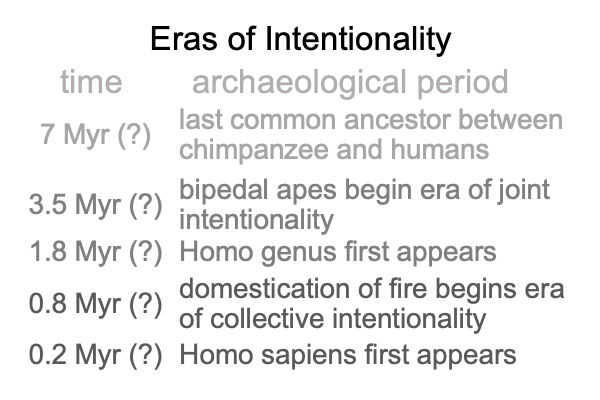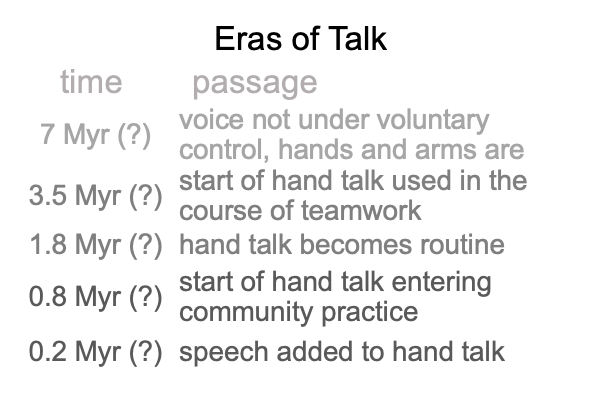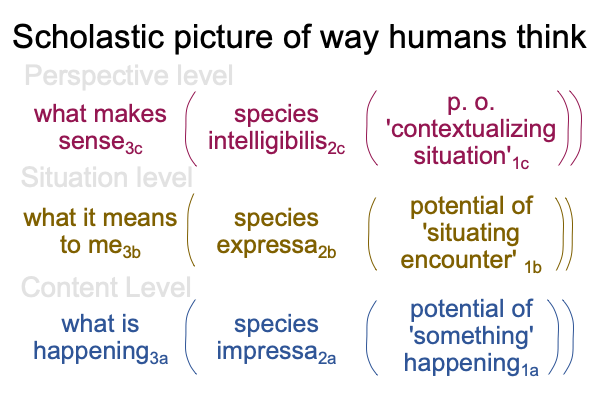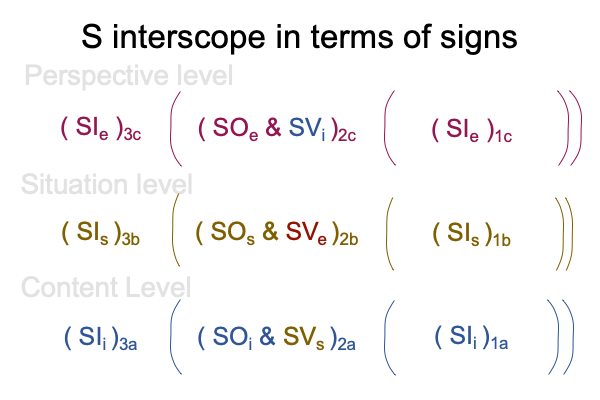0358 Just as the Homo genus first appears during the course of the era of joint intentionality, our species, Homo sapiens,appears during the course of the era of collective intentionality.
Here is a list of Tomasello’s eras of intentionality.

0359 How does the evolution of talk match up with these eras?

0360 The era of individual intentionality starts with the last common ancestor. The voice is not under voluntary control. The arms and hands are, for the most part, under voluntary control. They are used to request, inform and share. But, there are moments when they are less communicative, such as when a big fight happens. Then, the arms and hands become weapons. So do the teeth.
In other words, communicative manual-brachial gestures are most likely to be shared among friends and family. Pantomime and pointing are the primary modes.
0361 Once our lineage is fully bipedal (labeled by the term, “hominid), many species of “southern ape” evolve. The one that leads to our lineage (labeled by the term, “hominin”) adapts to the environment and ecology of mixed forest and savannah by working in teams. “We work for food.” is the motto. The teams are as diverse as what hominins figure that they can eat, that is not already taken by the baboons, vultures, hyenas, and so forth. The Oldowan stone-tool team is the only one to leave artifacts that evolutionary anthropologists study today.
Oldowan stone tools remain unchanged for hundreds of thousands of years.
0362 Hand talk is used in team work. For this to happen, manual-brachial gestures rely on pantomime and pointing. Gestures serve as natural signs, icons and indexes, based on the principles of similarity and indication. Icons and indexes tend to be intuitively obvious.
As voluntary, purpose- and situation-driven hand signs are routinized, they become more and more linguistic. According to Ferdinand de Saussure, language consists of two systems of differences, parole (talk) and langue (corresponding mental processing). The parole aspect consists in routine manual-brachial iconic and indexal signs (gesture-words). The langue aspect is a little more difficult to describe.
0363 Oddly enough, the schoolmen of the so-called “Middle Ages” formalize a portrayal of the way humans think. Impressions are called, in Latin, species impressa. Perceptions virtually situate impressions. They are called species expressa. Then, a perception may or may not be judged. A judgment puts sensation and perception into perspective. A species intelligibilis virtually brings a universal aspect of the species impressa into relation with an intelligible aspect of the species expressa. A species intelligibilis brings a species impressa intelligibilis into relation with a species expressa intelligibilis.
0364 Would Tomasello label this portrayal, “The process of intelligibilization.”?
I wonder.
Am I exhausted?
This is so intelligibilitating.
0365 Here is a picture.

0366 This diagram proves valuable in understanding langue, the mental processing that corresponds to parole (that is, hand talk). A gesture-word gets decoded in the sign-vehicle of the specifying sign, which is located in the slot for species impressa2a. This is why the natural signs of icon and index are so crucial to hand talk. The referent already exists. All the talker needs to do is to pantomime or to point in order to tell another person on the team the potential of ‘something’ happening1a in the normal context of teamwork happening3a.
0367 What does it mean to “me”?
Well, what “you” are telling me must be obvious (each word is an icon or an index) and easy to guess (each word must be distinct enough that I don’t confuse it with another gesture-word). Today, this is called, “sensible construction”. See Razie Mah’s A Primer on Sensible and Social Construction, available at smashwords and other e-book venues.
0368 Sensible construction associates to the content and situation levels of the scholastic interscope.
Sensible construction associates to interventional and specifying signs, as shown in the following figure.

0369 During the era of joint intentionality, hominins get better and better at talking. They get better and better at sensible construction. The iconicity and indexality of hand talk is crucial. Symbolic features operate under the surface of species impressa2a.
Also, the exemplar sign, the bridge between the specifying and the interventional sign, becomes more and more embodied. Tomasello’s “common cognitive ground”3c operates on the potential of mutual intention1c in the exemplar sign-interpretant. Teamwork itself makes obvious the perspective-level normal context3c and potential1c.
Hominins get better and better at performing interventional signs.
The Homo genus appears in the archaeological record during the era of joint intentionality.
0370 The era of collective intentionality begins with the domestication of fire.
Fire changes the dynamics of the band (50) and community (150), hand-talk is no longer confined to team (15) activities. A fully linguistic hand-talk adapts to the opportunity. As noted in How To Define the Word “Religion” (by Razie Mah, available at smashwords and other e-book venues), a fully grammatical hand-talk allows nonsensible statements. Each gesture-word in a statement may be an icon or an index. However, the statement itself may be nonsensical.
0371 A nonsensible statement cannot be sensibly situated1b. No-one knows what it might mean to me3b. The specifying sign is thwarted and the exemplar sign, already adapted to the common cognitive ground3c and shared intentionality1c of team hand talk, must now figure out… or… “socially construct” meaning, presence and message.
This meaning, presence and message does not fit the slogan, “We work for food.”.
The meaning, presence and message must fit something else, such as “We work for an organizational objective.” or “We work for the object that brings us into… um… organization or… hmmm…. relation.”
But, remember, none of these terms, “meaning”, “presence”, “message”, “organization” or “relation” can be imaged or indicated using hand talk. These explicit abstractions label implicit abstractions that become embodied, through natural selection, during the Lebenswelt that we evolved in.
0372 Social construction turns out to be very useful in the proximate niche of intergroup competition, as well as in the proximate niche of increasing number and diversity of successful teams (due to the advantages of cooking with fire).
One wonders about the diverse challenges and opportunities to using a fully linguistic hand-talk. Well, for one, a fully grammatical hand-talk allows one to make metaphorical statements that have two constructions, one sensible and one social. For two, a fully grammatical hand-talk allows one to make nonsensible statements, yielding social constructionsthat may bring members of the community into organization… and… relation.
0373 Not all nonsensible statements are born the same.
Some produce judgments that seal the marriage deal between a man and a woman.
For example, today, many religious traditions place a ring on the finger of each bonded man and woman.
How nonsensical is that?
Some nonsensical statements produce judgments that assist in bringing social circles, such as “band” and “community”, into harmony. When communities come together seasonally, for a mega-band (500) gatherings, or on great occasions, for tribal gatherings (1500), the voice is used for synchronization. Eventually, the voice adapts. Hominins learn to sing. Sexual selection assists in what happens next. The voice comes under voluntary neural control. Generations later, hand-talk enjoys a vocal, musical accompaniment.
0374 Then, in an act of natural genius, musical vocalizations becomes spoken words. At its conception, our species, Homo sapiens, practices hand-speech talk. Two modes of talking, one foundational and one… well… an adornment. One is based on icons and indexes. One sounds out the tones of pure symbols. Each sound-word is different. Yet, not one can picture or point to its referent.
0375 The concept of two modes of talk in a single language may seem strange.
The art and culture of the so-called “Upper Paleolithic” period explores cognitive spaces opened by hand-speech talk.
I suspect that this claim best explains the so-called “Upper Paleolithic Revolution”.
The evolution of talk is not the same as the evolution of language.
